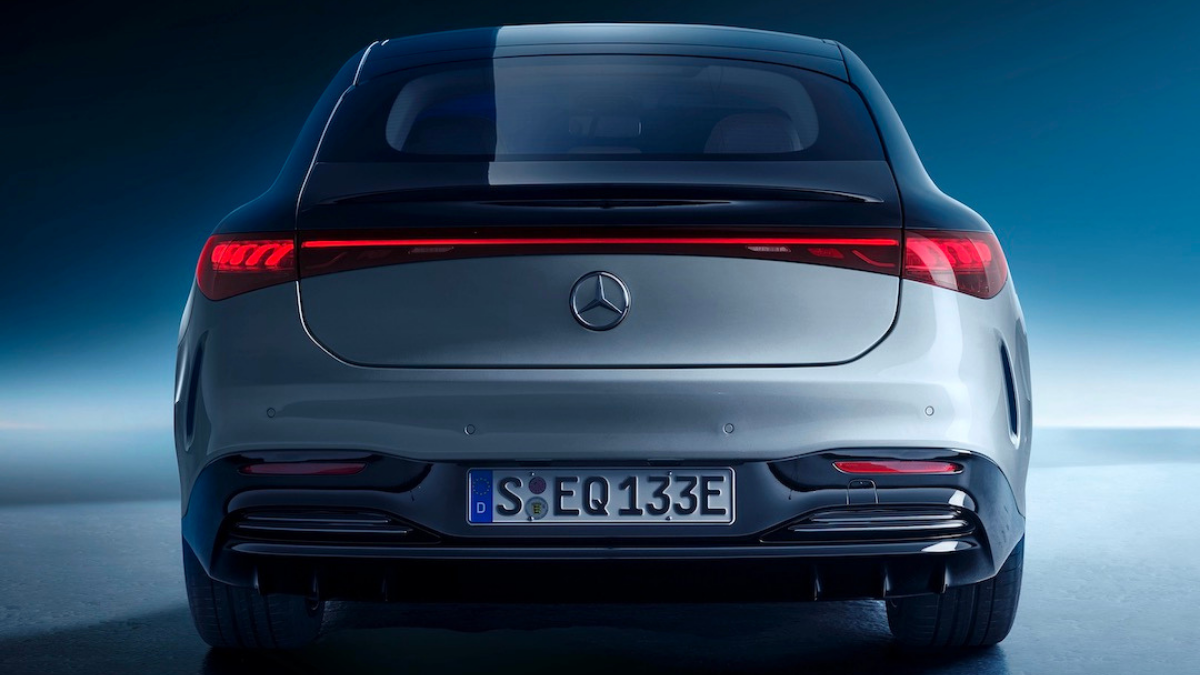Eqs 6.2
- Copy, translate, disassemble, decompile, reverse engineer. EQS Group charges a base fee for the Cloud Services, which is also shown in the price list. (the 'Base Fee'). The onboarding fees, package fees and the Base Fee for a period of twelve months are due in advance.
- Trusted Windows (PC) download EQS for Windows 6.2. Virus-free and 100% clean download. Get EQS for Windows alternative downloads.
When the Mercedes EQS electric sedan hits the street sometime later this year, drivers will be able to choose between three 'soundscapes'--digitally produced noises pumped out of the speakers meant to fill the void created by the absence of an internal combustion engine. At launch, drivers can choose between Silver Waves, Vivid Flux, or Roaring Pulse, none of which directly mimic the sound of an internal combustion engine.
Both Eqs (6.2) and (6.3) and Fig. 6.4 clearly indi-cate that the mass, or amount, of drug that remains at the absorption site or site of administration (or remains to be absorbed) declines monoexponentially with time. However, since we cannot measure the amount of drug remaining to be absorbed (X a) directly, be. Table 1A Tier 1 EQS for Soil at a Potable Site (PDF:60k) Table 1B Tier 1 EQS for Soil at a Non-Potable Site (PDF:73k) Table 2 Tier 1 EQS for Sediment (PDF:56k) Table 3 Tier 1 EQS for Surface Water (PDF:58k) Table 4 Tier 1 EQS for Groundwater (PDF:59k) Table 5 Substances Potentially Considered as Background Occurrences (PDF:49k).
Interestingly, however, Mercedes' sound team actually did consider giving the EQS simulated vroom-vroom sounds at one point in development but decided against it for several quite understandable reasons. When we asked Benz sound design engineer Dr. Thomas Küppers whether he and his team ever considered including, say, the sound of the company's old 6.2-liter AMG V8 as an EQS soundscape, he replied, 'We discussed the topic of 'artificial combustion sound' intense and often: the implementation of an iconic engine sound like the AMG V8 into our EV family, is no easy task.'
© Mercedes-Benz'Our customers' expectations linked to AMG and the unique AMG sound are high. You might know from computer games, that imitating an engine sound is a complex thing, and within the crowd not a single game has met the expectations of (re)producing sounds.'
I gotta agree with him here. Car audio from games like Forza and Gran Turismo has come a long way but still sound a world apart from the real thing.
'Also the driving dynamics from an electric vehicle differ too much from an combustion engine: you miss the characteristic changes in the gearbox,' Küppers continued. 'And we learned within our car clinics: if you want to have that unique AMG experience, you turn your head towards Affalterbach. Customers, who buy an electric vehicle, are keen on this new 'user experience' and search for acoustic differentiation.'
Another pair of fair points. CVTs get a lot of flack for simulating the gears of a traditional automatic transmission and an EV with fake shifting noises would undoubtedly fall into the same category. And, sure, dweebs like you and I who spend Friday nights browsing Craigslist for old Miatas might find an EV with the sound of an AMG V8 amusing. But to crib an analogy made by Küppers himself during a press presentation, to the people actually ponying up the cash to buy cars like the EQS, it'd be a bit like a new smartphone coming with a keyboard that made fake typewriter noises every time you used it.
And how obnoxiously dorky would that be?
Got a tip or question for the author? You can reach them here: chris.tsui@thedrive.com
New Features in EQS 6.1 and Added Features in 6.2
EQS 6.1 is available in a downloadable program with Program Manual and User's Guide in PDF format. Please note that we provide free Technical Support to all of our Licensed users. We would like to encourage EQS 6.1 users to periodically go back to their download instructions and use the Web address to update their program to the latest Build.
Click on any of the following new features available on EQS 6.1 to learn more:
- New and Improved Normal Theory and Missing Data Methods
- Arbitrary Distribution Methods
- Resampling and Simulation Methods and Statistics

Added Features in 6.2
1. Nesting and Equivalence Tests
2. Automatic Difference Tests
3. Exploratory Factor Analysis (with Bifactor Rotation)
4. Smoothing a Correlation Matrix

5. New Categorical Data Handling Options
6. New Formula for Robust RMSEA
7. Satorra-Bentler Mean and Variance adjusted
_______________________________
NEW AND IMPROVED NORMAL THEORY (EM-TYPE MISSING DATA) METHODS

- Jamshidian-Bentler EM-type missing data procedures for one or multiple samples.
- Kim-Bentler test of missing completely at random (MCAR), including homogeneity of means and covariances.
- LM and Wald tests in multi-sample analysis.
- Bentler-Yuan test for potential structured mean models.
- Bentler-Raykov corrected R-square for nonrecursive models.
- Regression and Bentler-Yuan optimal GLS factor scores computed and saved.
- Advanced start values for structured mean analysis.
- Standard errors for total effects.
- Internal consistency reliability and maximal reliability coefficients for composite based on a 1-factor model.
- Reliability coefficient rho for a factor model.
- Cronbach’s alpha, greatest lower bound reliability, Bentler’s dimension-free lower bound reliability and Shapiro’s lower bound reliability for a weighted composite.
_______________________________
_
CORRECTED NORMAL THEORY METHODS FOR NON-NORMAL & MISSING DATA
- Satorra-Bentler statistic for multiple methods and multi-sample analysis.
- Correct (including Satorra-Bentler robust) standard errors for indirect and total effects.
- Satorra-Bentler information matrix for LM test.
- Yuan-Bentler F-test and Yuan-Bentler-Browne residual-based statistics.
- Yuan-Bentlercorrect statistics for non-normal missing data.
_______________________________
_
HETEROGENEOUS KURTOSIS METHODS
- Bentler, Berkane and Kano statistics for heterogeneous kurtoses.
______________
Update On Mexico Eqs.6-23-20
_______________________________
_
ARBITRARY DISTRIBUTION METHODS
- Asymptotically distribution free (ADF) mean and covariance structure methodology.
- Yuan-Bentler corrected chi-square and F-tests.
- Yuan-Bentler corrected ADF standard errors.
- ADF analysis of correlation structures.
_______________________________
_
CASE (SUBJECT) WEIGHTING METHODS
- A priori case weights for weighted mean and covariance structure analysis (e.g., for complex sample surveys).
- Yuan-Bentler case-robust methodology for outliers and influential observations.
_______________________________
_
MULTI-LEVEL MODELS
- HLM-like (Chou, Bentler and Pentz) multilevel methodology for latent variables.
- Bentler-Liang maximum likelihood multilevel methodology.
- Muthén’s MUML multilevel methodology.
_______________________________
_
RESAMPLING AND SIMULATION METHODS AND STATISTICS
- Standard errors for standardized solution etc via bootstrap.
- Model based bootstrapping (extended Beran-Bollen-Stine methodology).
- Expanded simulation capacities: multiple group and MCAR data generation.
- Deng-Lin FMRG random number generator.
_______________________________
_
MODELING FEATURES AND APPROACHES
- /MODEL paragraph for simple model specification (virtually eliminates the need for /EQUATION, /VARIANCE, and /COVARIANCE sections). Many equations are built with a few simple script commands.
- Command script for building many constraints simply.
- Maximum number of model variables (including categorical) raised to 200.
- SAVE paragraph for saving imputed data and factor scores.
- Statistics and indexes for Satorra-Bentler 'robust' statistics reportable separately.
- EQS output optional in HTML format.
- EQS output optional in matrix format or compact format (instead of equation format).
Eqs 6.1
_______________________________

_
DIAGRAMMER
- Advanced Diagrammer for creating and reporting a model.
- Wizard system to create path, factor, structural equation, and latent growth curve models.
- Polynomial-orthogonal coefficients computed for latent growth curve model.
Eqs 6.4 User Guide
_______________________________
_
USER INTERFACE IMPROVEMENTS
- Project manager for organizing and retrieving all analyses from a treeview outline.
- Transporter for moving a project and its related analyses with a simple drag and drop operation.
- More usable data editor with unlimited sample size.
- Data sheet modifiable with a simple drag and drop operation.
- Covariance matrix is now entered directly on the data editor.
- Better 3D data plot.
- Improved and more general ANOVA.
- Some non-parametric general statistics analyses available.
- Front-end EM missing data procedure for data imputation.
- Improved equation builder.
- General-purpose multi-equation data transformation in a syntax window.
- Transformation formulas are savable and re-usable.
- Simple creation of z-scores for a variable or an entire data sheet.
Back to the Table of Contents